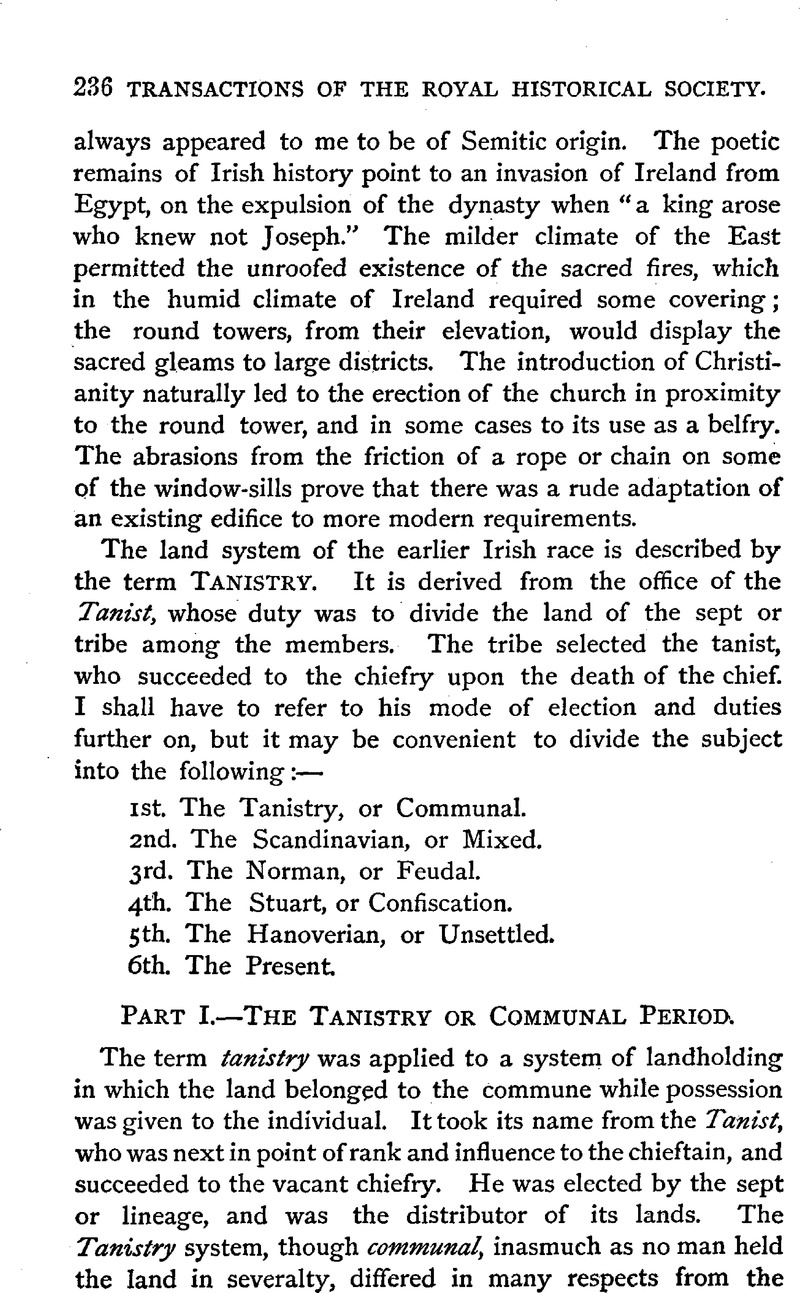No CrossRef data available.
Published online by Cambridge University Press: 12 February 2009

page 239 note * The proper term would be Gdbleach cime.
page 245 note * An Ancient Psalter.—Fac-similes of Irish national MSS. are at present being selected and edited by Mr. Gilbert, of the Public Record Office of Ireland. The first part of the collection, which will be one of profound interest to Irish scholars, is nearly completed. We learn from a report just issued, that among the documents, fac-similes of which have been prepared, is a Latin psalter styled “Cathach,” or the “Fighter.” It is ascribed to the hand of St. Columba, who made Iona famous, and receives its name from the antique metal casket in which it is preserved. The legend is that, while sojourning with St. Finnen, in Ulster, he borrowed this psalter, and “copied it furtively in his church, with the aid of miraculous light, in the night-time.” Finnen claimed the copy as his property, but Columba did not recognise his right, and King Diarmid was appealed to. His Majesty decided “that as to every cow belongs her calf, so to every book belongs its copy.” Columba did not see the force of his analogical reasoning, and kept the treasure. The psalter was preserved as a sacred heirloom among his kindred the O'Donels, who ruled in the most western part of the north of Ireland, styled Tir Cohaill, or the land of Conaill, from their progenitor of that name, and now known as Donegal. The present casket was made towards the eleventh century by the direction of Cathbar O'Donell, head of the clan. It was long believed that if the Cathach was borne thrice before battle on the breast of a sinless cleric round the troops of the O'Donels, victory would be secured to them in a just cause. “To open the Cathach,” says the report, “was thought unlawful, and would, it was. thought, be followed by death and disasters among the O'Donels.” It ultimately came into the possession of Daniel O'Donel, who raised a regiment in Ireland for James II., and afterwards became a brigadier in the French service. It remained on the Continent until 1802, when it was transferred to Sir Hugh O'Donel, of Newport, in the county of Mayo. In 1814 his widow began proceedings in Chancery against Ulster King of Arms, for having opened the Cathach without permission. The manuscript, it is said, now consists of fifty.eight leaves of vellum, many of which at the commencement are damaged.